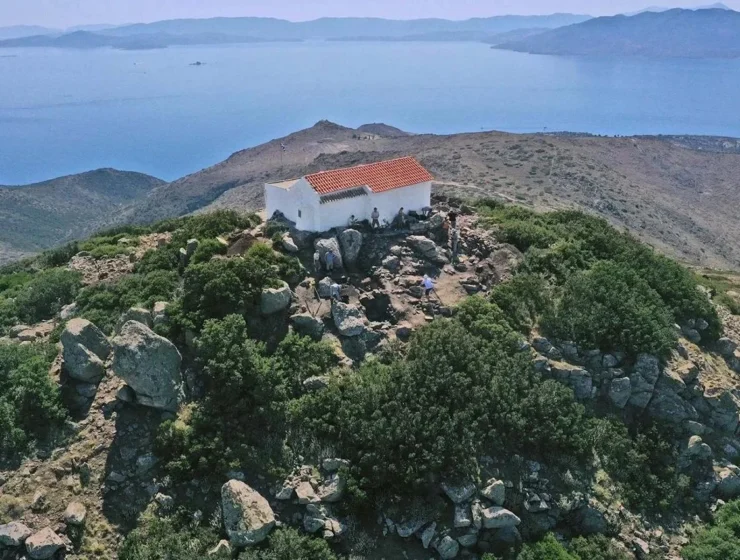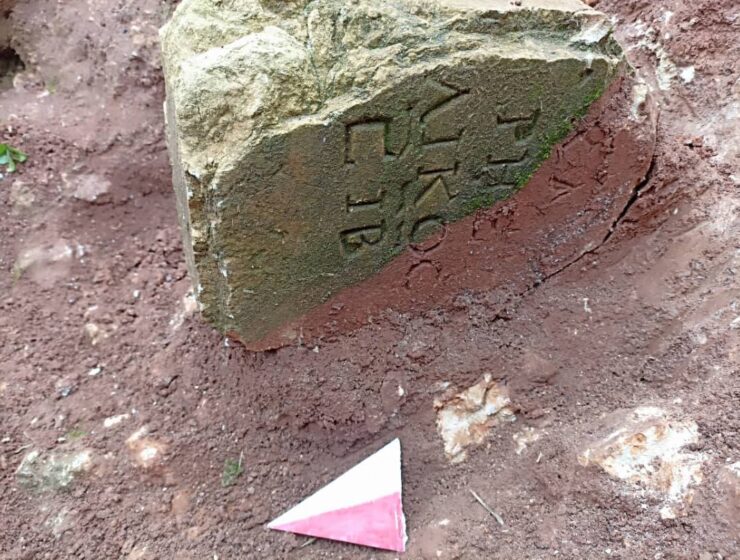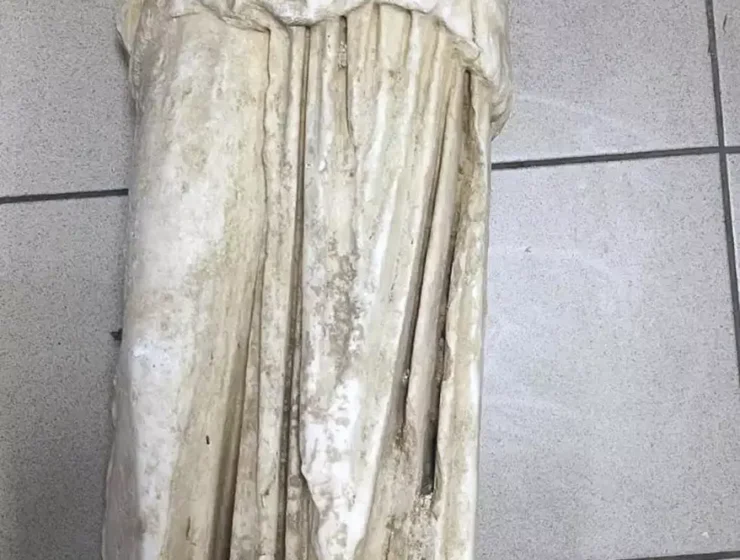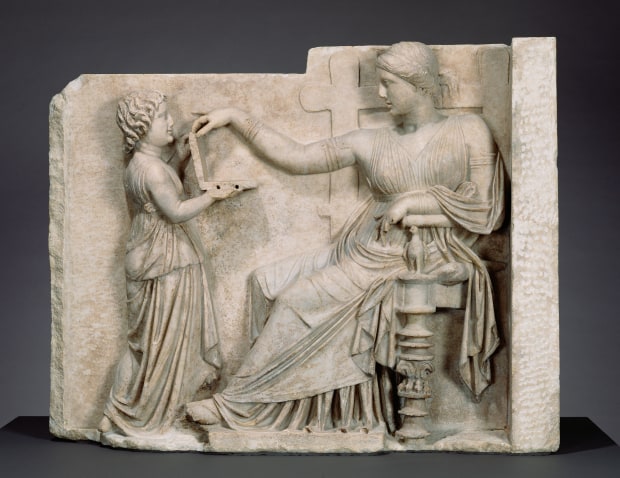A recent excavation on Mount Ellanio, the highest peak on Aegina Island in Greece, has…
Tag: archaeological discovery
The Antikythera Mechanism, a 2,000-year-old Greek astronomical calculator, was found in a Roman-era shipwreck near Antikythera. With 30+ gears tracking celestial events, this Hellenistic marvel from 100-200 BCE—possibly from Rhodes—challenges our view of ancient genius and hints at lost wonders.
In a rare discovery, archaeologists have unearthed a remarkably preserved house in ancient Pompeii adorned with frescoes of Greek mythological scenes, untouched since the catastrophic eruption of Mount Vesuvius nearly 2,000 years ago.
Archaeologists in Corinth have unearthed a Hellenistic-era funerary structure, resembling Macedonian tombs, during the “Ancient Tenea” program, revealing a possible healing cult with artifacts like a gold ring depicting Apollo. The site, excavated in Chiliomodi, includes a sarcophagus and animal bones, with ongoing digs expected to shed light on its full historical significance.
Mantha Zarmakoupi, a classical archaeologist, has spent four summers excavating the bouleuterion in Teos, an ancient city on Turkey’s western coast. The excavation has uncovered early Hellenistic mosaics and revealed significant insights into the city’s political and cultural history. Zarmakoupi’s team has also deciphered an ancient inscription, shedding light on Teos’ role as a hub of art and democracy in the ancient world.
The devastating floods caused by Storm “Daniel” in Libya have led to an unexpected archaeological…
Archaeologists have uncovered physical evidence of Tenea, an ancient Trojan city once believed to exist only in myth. Located near Chiliomodi in southern Greece, the site features well-preserved structures, including marble and clay floors, beams, columns, and the tombs of infants. This remarkable discovery confirms Tenea’s existence and reveals insights into its prosperity, offering a tangible link to the city founded by Trojans after the fall of Troy.
Archaeologists in Turkey have unearthed around 2,000 pieces of bronze statues in an ancient scrapyard in Metropolis, now known as Izmir. This discovery highlights the early recycling practices of the Late Antiquity period, revealing a treasure trove of disassembled bronze parts likely intended for reuse.
A Hellenistic-era statue was unexpectedly discovered in a garbage bag near a trash container in Thessaloniki, Greece, prompting an investigation into its origins.
An ancient Greek statue of a woman seemingly using a laptop has sparked online theories…
A 1,500-year-old Byzantine-era monastery has been discovered in southern Israel, featuring a remarkable mosaic with an ancient Greek inscription from the Book of Deuteronomy. Uncovered near Kiryat Gat, the site reveals the region’s rich historical significance and includes vibrant images and structures dating back to the Roman and Byzantine periods.
A team of archaeologists from the University of Haifa recently uncovered a rare treasure of over 160 ancient coins in the Jordan Valley, dating back to the Asmonean period over 2,100 years ago. Discovered near the ancient Fortress of Alexandria, the coins feature inscriptions in both Aramaic and Greek, including the name of King Alexander Jannaeus. The find, made during the Jewish festival of Hanukkah, provides a unique glimpse into the region’s history and is one of the largest coin collections ever found in the Holy Land.
Archaeologists in Turkey have uncovered a depiction of the Greek goddess Hecate in a 3,000-year-old temple complex in Mugla province. The discovery at Lagina, an ancient Greek town, reveals new insights into the cult of Hecate and the rituals performed by pilgrims. The find includes a Hecate torch motif on a column and Corinthian capitals from the Hellenistic and Roman periods, offering a glimpse into ancient religious practices.
A hidden trove of ancient artifacts, dating from Greece’s Geometric period (1100-750 BC) to the Hellenistic era (up to 31 BC), was discovered in a vacated Athens store earlier this year. The cache, packed in boxes wrapped with 1940s newspapers, included over 3,000 items, ranging from ancient coins and vessels to post-Byzantine religious artifacts. The find highlights Athens’ rich historical layers and underscores the importance of preserving and studying cultural heritage.
Archaeologists in Tuscany have uncovered a remarkable collection of ancient artifacts at the thermal springs of San Casciano dei Bagni, including statues, coins, jewelry, and intact eggs from the Roman and Etruscan eras. Among the finds is a large bronze statue believed to depict Agathodaemon, a protective deity from Greek mythology. These treasures, preserved by the warm mud of the springs, will be displayed in a new museum opening in 2026.
During the construction of Athens’ new Metro Line 4, archaeologists have uncovered a 22-meter section of an ancient road from the 4th century BCE at the University of Athens campus. With plans for its preservation and future relocation, this find offers insights into the historical Potamos municipality near Mount Ymittos.
An archaeological dig in Palaepaphos has revealed an intriguing inscription of ancient Cypriot writing on a wall from the 6th century BC. This discovery, made in the Kouklia-Martsello area, has drawn considerable interest, potentially shedding light on the site’s historical significance. Recent excavations have shifted focus from the site’s once-presumed defensive role to a more devotional purpose, sparking new theories about its past.
During the construction of a water pipeline on the Greek island of Euboea, workers uncovered a stunning 2,400-year-old mosaic depicting dancing satyrs. This artwork, dating back to the mid-fourth century BCE, features two mythical figures playing music and dancing, offering a fascinating glimpse into ancient Greek culture and artistic expression. The mosaic was found in Eretria, an ancient town on Euboea, and is in exceptional condition. To protect the site, construction has been rerouted, and the mosaic is now covered for preservation.
A gold plaque inscribed with Greek letters has been discovered at the ancient Apsaros Fortress in Georgia, offering new insights into the religious practices of Roman soldiers. The plaque, believed to be an offering to the war god Jupiter Dolichenus, strengthens evidence that the fortress was located near a temple dedicated to this deity. Archaeologists believe the soldiers may have left the offering seeking divine favor in battle, reflecting the widespread veneration of Jupiter Dolichenus across the Roman Empire.
In a rare discovery, archaeologists have unearthed a remarkably preserved house in ancient Pompeii adorned with frescoes of Greek mythological scenes, untouched since the catastrophic eruption of Mount Vesuvius nearly 2,000 years ago.



















